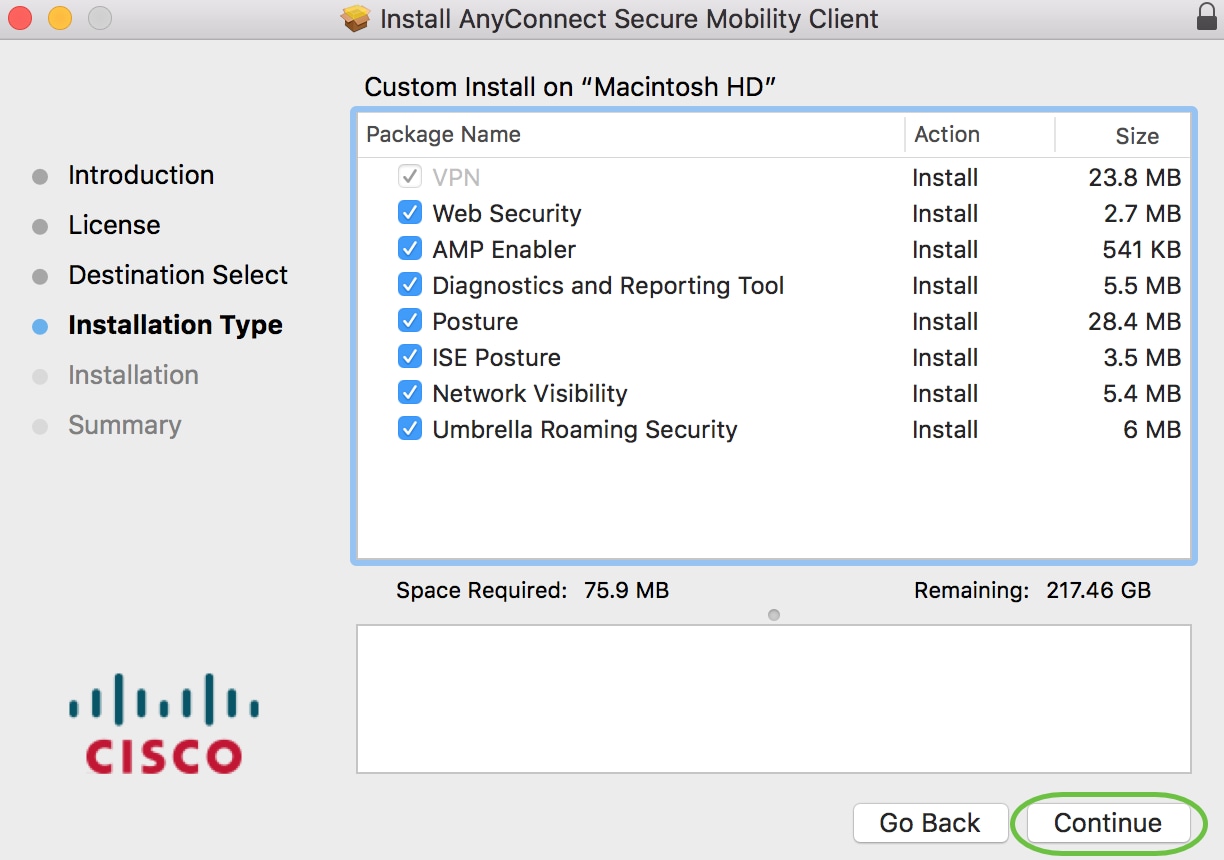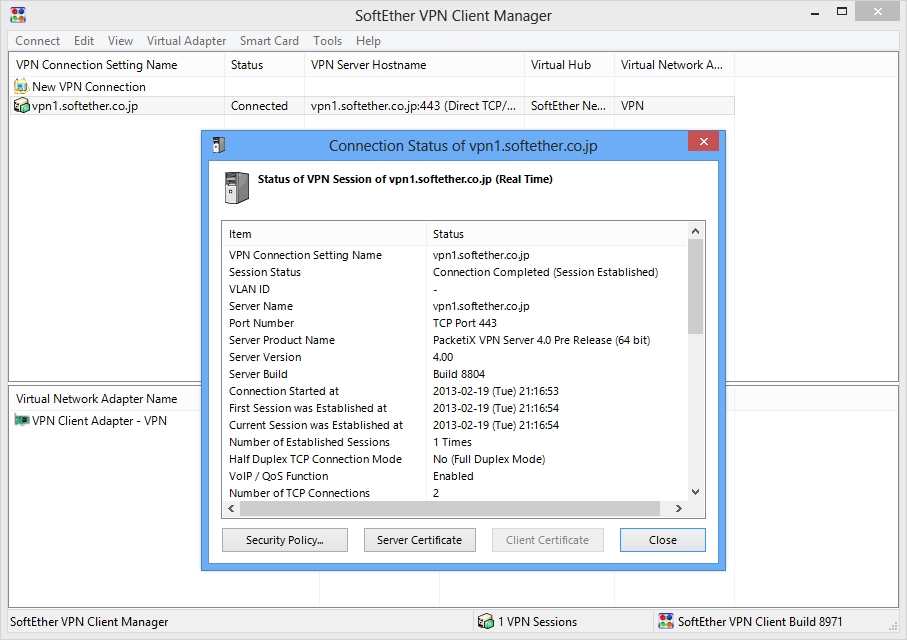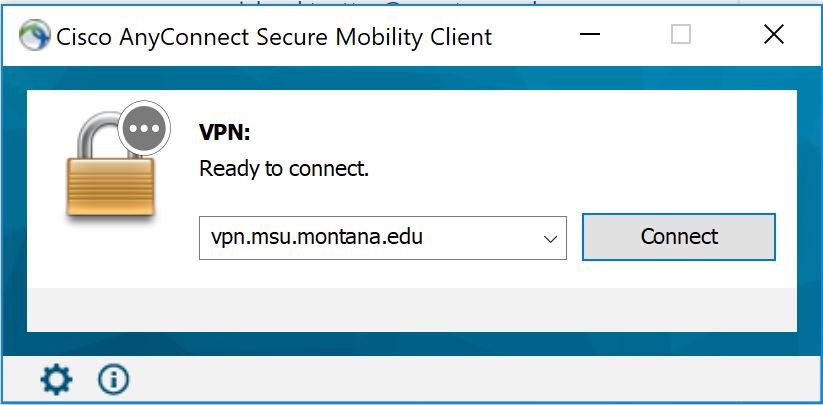Oct 31, 2013 The first bump in the road came with the advent of Windows 8. We have been successfully deploying the 64-bit Cisco VPN Client 5.0.07.0440 software to our Windows 7 64-bit, and now Windows 8 (which only comes in 64-bit) OS machines. However, we found an odd problem on the Windows 8 OS — when the Cisco VPN Client was connected, only the desktop.
This webpage will show incompatibilities and issues that users at IowaState may have with OS X 10.9 (Mavericks). Please sendincompatibilities and issues you have encountered that will affect theISU Community to the macosx-admin@iastate.edu mailing list.

Cisco AnyConnect VPN Client
CyFiles and OrgFiles
Fetch
Gatekeeper
OpenAFS
PaperCut Client
Sophos Anti-Virus for Mac Home Edition
tn3270 X
- VPN to download the client. INSTALLING CISCO ANYCONNECT 5 3. When the download is done, open the file by clicking it. INSTALLING CISCO ANYCONNECT 10 9.
- You need secure connectivity and always-on protection for your endpoints. Deploy Cisco endpoint security clients on Mac, PC, Linux, or mobile devices to give your employees protection on wired, wireless, or VPN. Breaches detected in test. Source: NSS Labs. Average time to detect a breach. Source: 2018 Cybersecurity Report.

Cisco AnyConnect VPN Client
The web-based installation fails. To install the Cisco AnyConnect VPN Client, you need to download theinstaller package, by clicking on the “Mac OS X 10.6+ Intel” link.
There has been reports from other universities that the Cisco AnyConnect VPN client will randomly disconnectunder OS X 10.9 (Mavericks).
CyFiles and OrgFiles
Connecting to a SMB share point can damage file permissions on the share point server.
Fetch
Fetch 5.7.3 is compatible with Mac OS X 10.9 (Mavericks), aside from one issue where the path popup menusometimes does not appear when the Path button is clicked. Clicking the Recent button appears to fix thisproblem, at least temporarily. Command-clicking the window title to display the path menu is not affected.
Gatekeeper
Gatekeeper is a feature in Mavericks that builds on OS X’s existing malware checks to help protect your Macfrom malware and misbehaving apps downloaded from the Internet.
Gatekeeper applies to apps downloaded from the Internet. Apps from other sources, such as file servers,external drives, or optical discs are exempt, unless the apps were originally downloaded from the Internet.Gatekeeper’s default option is to only allow you to run downloaded apps that come from the Mac App Store andidentified developers.
ITS helper apps and installers are not currently signed to bypass Gatekeeper. However, there is method that youcan use to open these apps. See the section titled “How to open an app from a unidentified developer and exemptit from Gatekeeper” from this Apple article for details: OS X: About Gatekeeper.
OpenAFS
Download OpenAFS 1.6.6 for MacOS 10.9 (Mavericks).
PaperCut Client
The PaperCut Client needs a java runtime. No java runtime is installed by OS X 10.9. To install Java, go toDownload Java for Mac OS X.
Sophos Anti-Virus for Mac Home Edition
There is no official “Sophos Anti-Virus for Mac Home Edition” for OS X 10.9 (Mavericks) currently avialable.

tn3270 X
tn3270 3.3b6 is not compatible with OS X 10.9 (Mavericks). Update to tn3270 X 3.4.
Last Updated October 20, 2014Virtual Private Network (VPN) is a remote access technology that creates a private encrypted connection over the Internet between a single host and Stanford's private network, SUNet.
Stanford's VPN allows you to connect to Stanford's network as if you were on campus, making access to restricted services possible. There are two types of VPN available:
- Default Stanford (split-tunnel) allows access to anything at stanford.edu via the VPN connection but non-Stanford traffic flows normally on an unencrypted internet connection.
- Full Traffic (non-split-tunnel) encrypts all internet traffic from your computer but may inadvertently block you from using resources on your local network, such as a networked printer at home.
Features
- When using VPN, your off-campus computer is dynamically assigned a Stanford IP address to connect back to Stanford's network.
- A Stanford IP address allows you access to Stanford's computing resources and certain campus services (e.g., departmental file and print servers).
Designed for
Faculty, staff, and students
Requirements
- An active SUNet ID
- Windows 8 SP1 and later
- Mac OS X 10.9 and later*
- iOS 10 or later
- Android OS 6.0 or later
*Note for Mac High Sierra (10.13): When you log in to the Cisco AnyConnect VPN, you may be prompted to upgrade to a new version of software. If you choose to upgrade, you'll see a System Extension Blocked alert directing you to go to System Preferences > Security & Privacy to allow the extension. The approval field is only present in the Security & Privacy preferences pane for 30 minutes after the alert. If the extension is not approved with in 30 minutes the software will not function correctly.
Data security
Get started
Select your operating system to see the VPN configuration instructions for your device:
Learn more
Many commonly used Stanford applications and services are available directly from the Internet without the use of VPN. While VPN does encrypt your data in transit, nearly all of the web-based applications you access already default to secure https communication, and are therefore already encrypted.

Examples of commonly used Stanford services which do not require VPN:
- Office 365
- Zoom
- WebEx
- Axess
- Oracle Financials
- Cisco Jabber
- Slack
- Google Drive
- G Suite
University IT (UIT) recommends that you donot enable your VPN connection unless the server or application that you are trying to access requires a VPN connection. Using VPN adds unnecessary additional overhead, which may degrade the user experience while connected, especially for video conferencing, streaming services, or applications.
Many secure servers within the Stanford University network do require the use of VPN. There is no published list of these servers, but it is easy to quickly determine whether the server/system you are attempting to connect to requires VPN with this simple test: try performing daily duties without the VPN enabled. If you cannot access a service, enable the VPN and try again.
If you do require a VPN connection, UIT recommends that you use the split-tunnel profile rather than full-tunnel. The split-tunnel profile enables the Internet-bound traffic to flow directly outbound via your home ISP, without first going to the Stanford VPN, and then route to the Internet. This also ensures better performance overall. Please remember that when using the full-tunnel profile, all traffic from your system routes first through the Stanford VPN and then out to the Internet.
Stanford University Libraries (SUL) updated the method by which authorized community members access restricted journals from off-campus.
Rather than using Stanford's VPN (Virtual Private Network), SUL wants community members to use its EZProxy service: http://library.stanford.edu/using/connect-campus/ezproxy-alternative-campus-access
See also
Cisco Vpn Client 10.9 Download
- Instructions for using Remote Desktop to work remotely
- Work Anywhere website for more resources for telecommuting and remote work